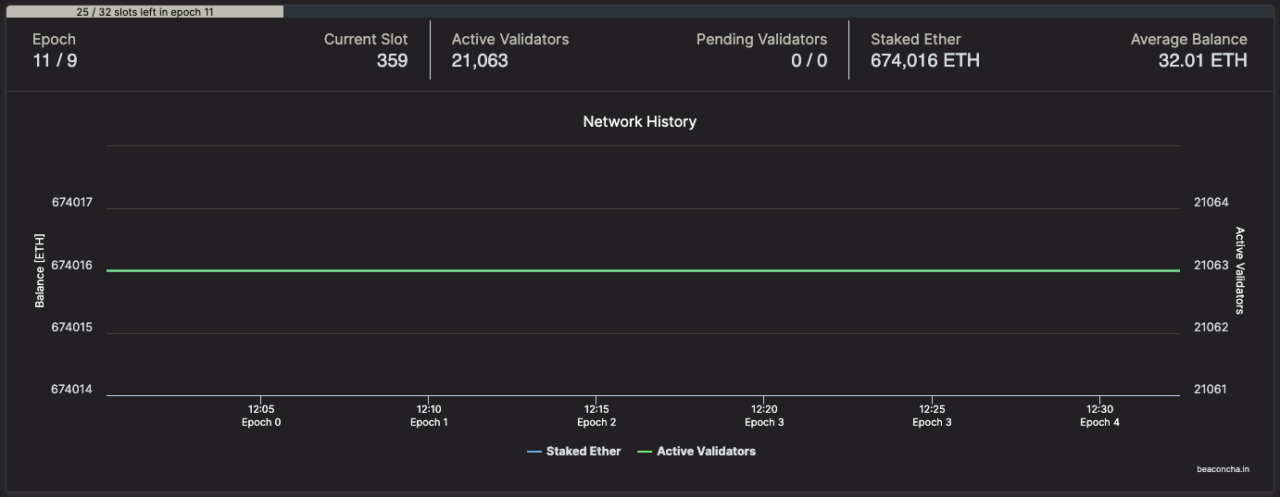The launch of the Beacon Chain, which is the first stage in the ETH 2.0 development roadmap, took place successfully at 12:00 UTC on Tuesday (December 1).
Raul Jordan, Co-Founder at Prysmatic Labs, had this this to say about the launch:
The Beacon Chain is a Proof-of-Stake (PoS) blockchain, and it signals the first step in the plan to change Ethereum’s consensus mechanism from Proof-of-Work (PoW) to Proof-of-Stake. It runs alongside the original Ethereum PoW chain, making sure that there is no break in the continuity of the chains.
As ConsenSys explained in a blog post published on 16 May 2019, the Beacon Chain has the following responsibilities:
- “Managing the proof of stake mechanism”
- “Processing Crosslinks”
- “Direct consensus and finality”
Phase 1, which is expected to hopefully launch in 2021, will “address finality and consensus on shard chains”, and it will be “more of a ‘test run’ for shard chains than the release of an immediately-scalable solution.”
Earlier today, Ethereum creator Vitalik Buterin provided an update on how decentralized ETH 2.0 validators are:
And around 04:20 UTC, Vitalik noted that the PoW difficulty had just hit an all time high:
According to data from the open source Ethereum 2.0 Beacon Chain Explorer tool developed by Austrian blockchain firm Bitfly, as of 13:10 UTC on December 1, 21,063 validators from around the world are taking part in ETH2’s PoS consensus mechanism, and so far, 674,016 ETH has been staked (i.e. sent to the ETH2 deposit contract address).
According to data by CryptoCompare, Ether is currently trading at $571.71, up around 347% (vs USD) in the year-to-date period.
Featured Image by “elifxlite” via Pixabay.com
The views and opinions expressed by the author are for informational purposes only and do not constitute financial, investment, or other advice.









